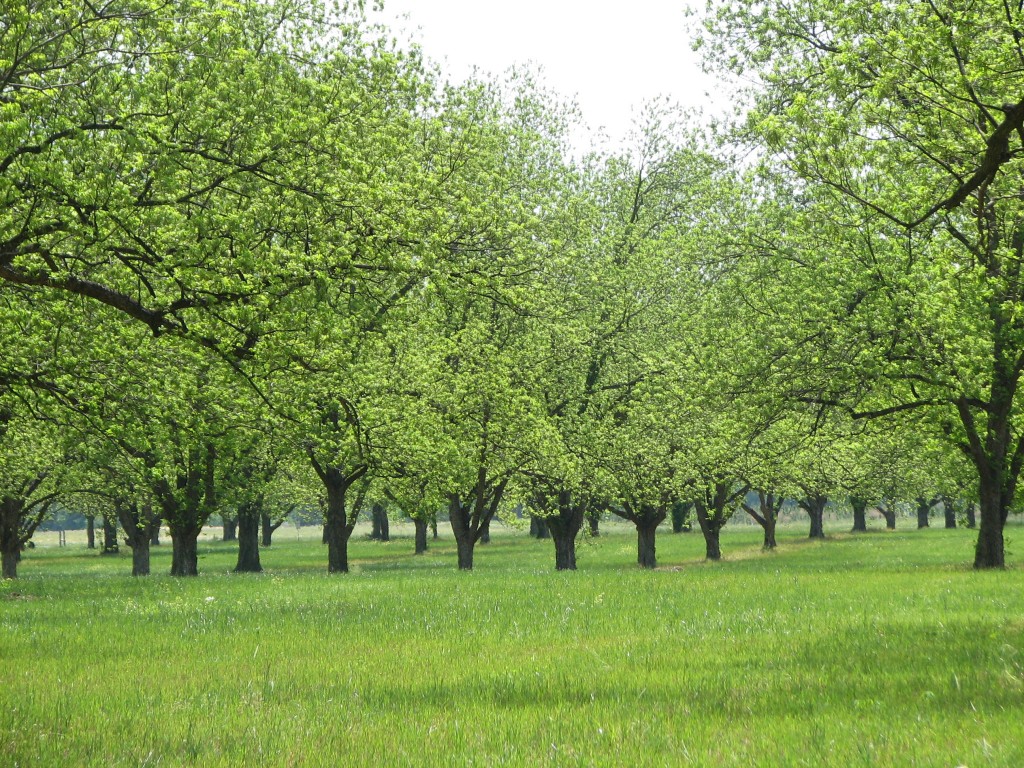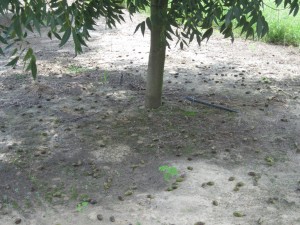You may be seeing a significant amount of nut drop at the moment on certain varieties. This will usually be water stage fruit split at this time of year.
Water stage fruit-split of pecan is often a major problem exhibited by thin-shelled pecan varieties (e.g., Schley, Caddo, Oconee, Sumner, ‘Wichita’, ‘Frotcher’, and ‘Farley’) and, to a lesser degree, by certain relatively thick-shelled cultivars (e.g., ‘Cape Fear’ and ‘Elliott’). The problem occurs when the shell, seed coat, and sometimes the shuck splits about the time of the initiation of kernel filling and shell hardening, resulting in abortion and drop of damaged fruit about 7 days after splitting.
Water split is highly erratic, with incidence and severity varying depending on cultivar, location, and year. Crop loss can be severe in certain years and nearly absent in others. It occurs during the “late water stage”; a time when turgor pressure inside the nut is high and the shell is beginning to harden. This typically occurs during mid-August for susceptible cultivars growing in the southeastern U.S.
Water split is associated with rainfall occurring at the initiation of shell hardening. There are usually 2 episodes to water split. The major episode is usually triggered by rainfall (or potentially irrigation) and a relatively minor event triggered by “high humidity/low light”. Irrigation schedule, shading, and crop load also factor in.
Often, the split is inside the nut and you will simply see green nuts on the ground, which will stain a few days later. Other times when the incident is particularly violent you will see an actual longitudinal split in the shuck itself. By the time you see water split, there’s little that can be done. Crop loss to water split is minimized, but not totally prevented, by managing soil moisture to minimize the severity and duration of water stress during the last two weeks of fruit sizing, and by crop-load thinning. Certain varieties will always have a potential for it under the right conditions. It seems to be worse when there’s been a dry spell and you suddenly get a heavy rainfall or crank up the irrigation all of a sudden. This is another reason to maintain good soil moisture and minimize water stress through the entire season. Foliar sprays of B and Ni in the spring have also led to reductions in water split.



